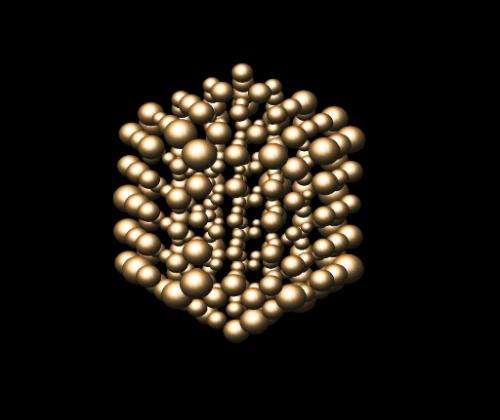Scientists unveil new technology to better understand small clusters of atoms

Physicists at the University of York, working with researchers at the University of Birmingham and Genoa, have developed new technology to study atomic vibration in small particles, revealing a more accurate picture of the structure of atomic clusters where surface atoms vibrate more intensively than internal atoms.
Using new computer technology based on gaming machines, scientists were able to use a combination of molecular dynamics and quantum mechanics calculations to simulate the electron microscopy of gold particles. By modelling the atomic vibration of individual atoms in such clusters realistically, external atoms on the surface of the structure can be 'seen' to vibrate more than internal atoms. The research is published in the latest issue of Physical Review Letters.
Currently, electron microscopy only allows scientists to estimate the average position of atoms in a three-dimensional structure. This new technique means that, for the first time, the difference in individual atomic motion can also be considered, enabling more accurate measurements of an atom's position and vibration in small particle structures.
This new development paves the way for a new field of dynamical study in the position dependence of atomic vibration in small particles, and is also likely to benefit the catalytical study of particles.Richard Aveyard, Postdoctoral Research Associate in the Department of Physics at York, said: "Our work highlights the valuable contribution that computational simulations can have in the field of electron microscopy: the more details we can put into our simulations, the more details we can extract from experiments."
Professor Jun Yuan, from York's Department of Physics, added: "Our work can already explain the numerical discrepancies in the existing experimental data. We believe that it will also prompt new experiments focusing on the dynamical properties of the atoms at nanostructures, allowing us to understand the contribution of the previously little probed dynamical structure studies of atomic clusters, towards the physical properties such as catalytic relativities."
Journal information: Physical Review Letters
Provided by University of York




















